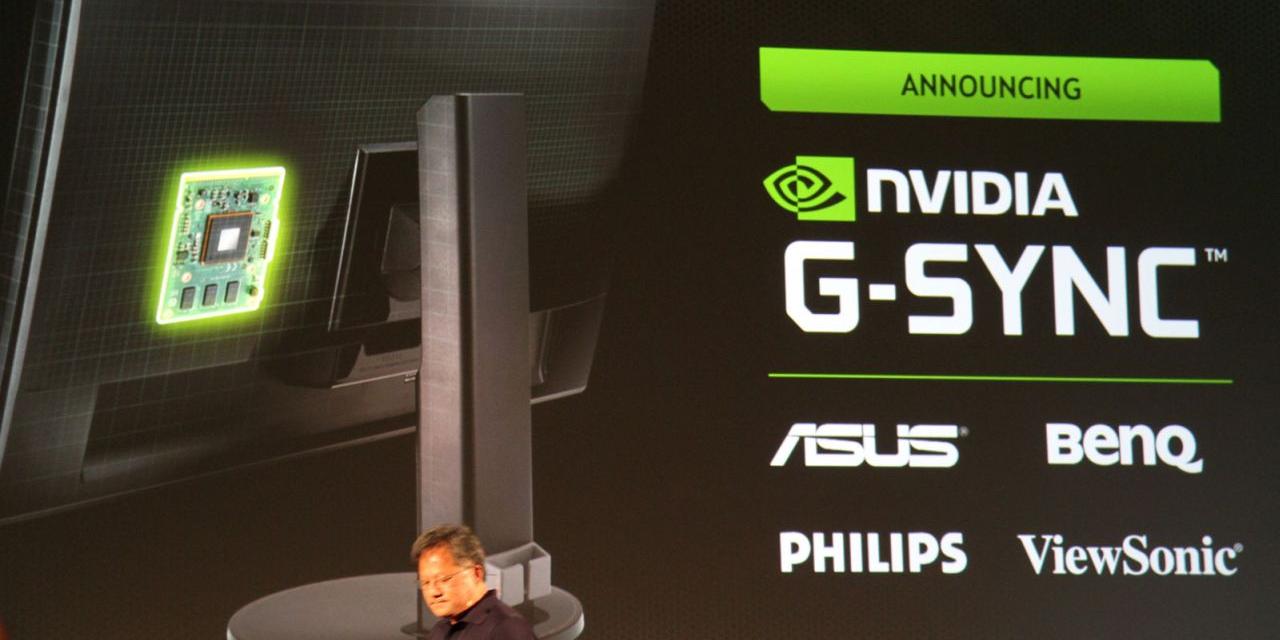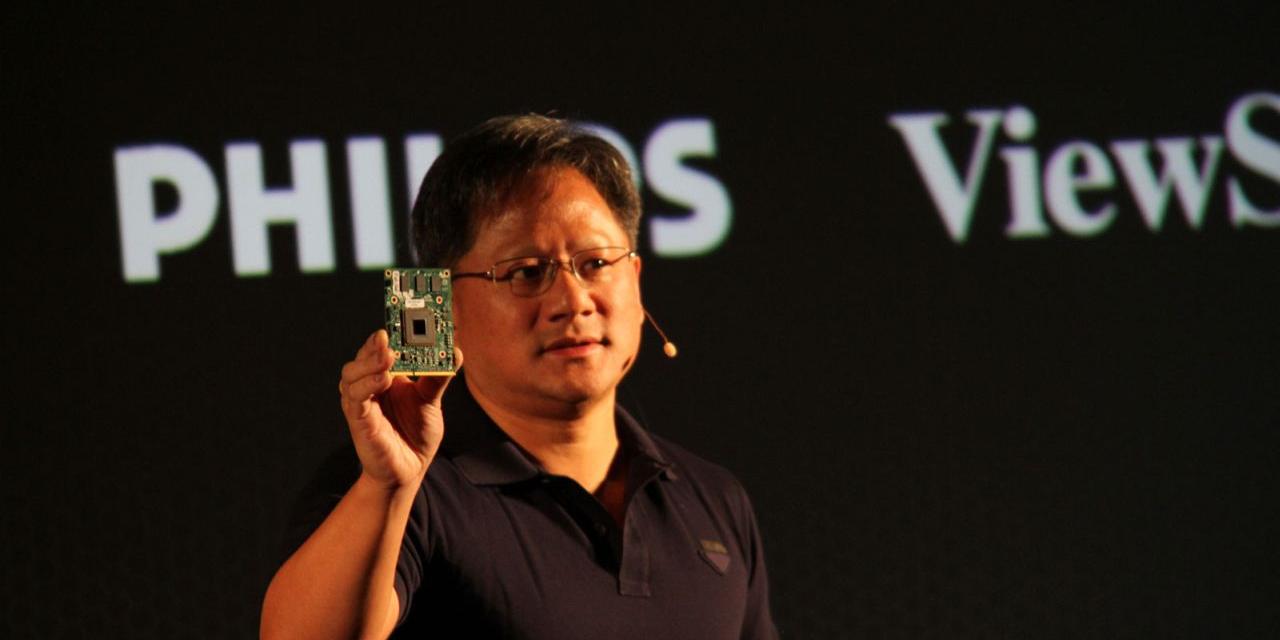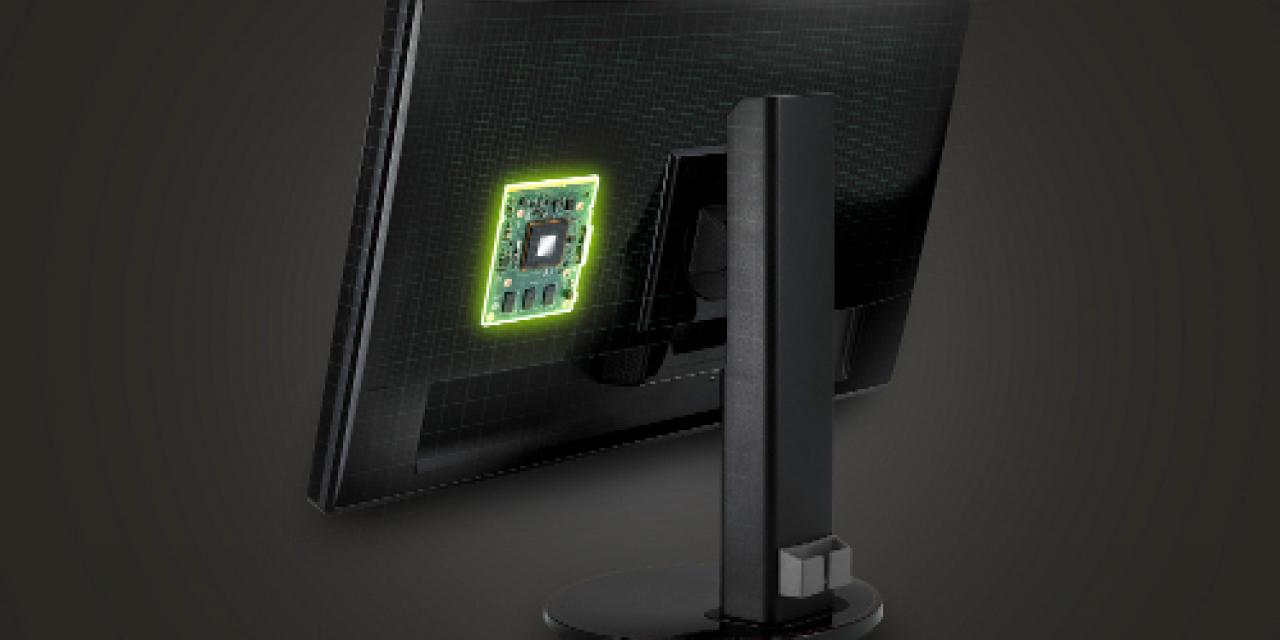


NVidia revealed today G-Sync, a new technology to avoid animation stutter on LCD screens without suffering from the disadvantages of V-Sync.
V-Sync prevents animation stuttering by limiting GPU frame rate to a multiple of the screen's refresh rate. A standard monitor has a refresh rate of 60FPS, so V-Sync forces GPU frame rate to 60 fps, 30 fps, 15 fps, etc... This synchronizes each frame rendering with a screen draw, but it reduces the frame rate and causes input lag.
But this 60 fps refresh rate is actually a relic carried from the past when CRT screens had to draw each frame pixel-by-pixel using its ray gun. Realizing that this limitation doesn't apply to LCD screens, NVidia designed G-Sync the other way around: the new tech syncs the screen refresh rate to the GPU's frame rate.
NVidia assembled together a team of "two dozen GPU architects and other senior guys" who spent "hundreds of engineer-years" to come up with an ideal solution: the G-SYNC Module.
The G-SYNC Module is built to fit inside a display and work with the hardware and software in most of our GeForce GTX GPUs.
With G-SYNC, the monitor begins a refresh cycle right after each frame is completely rendered on the GPU. Since the GPU renders with variable time, the refresh of the monitor now has no fixed rate. This has two main advantages: (1) screen is always in sync with GPU no matter what the frame rate is, so there is no stuttering whatsoever and there is no artificial limitation on FPS; and (2) each frame gets to be drawn as soon as it is ready, so input lag is at its minimum.
"G-SYNC moves us a little closer to gaming nirvana – a world of great image quality with no tearing, no monitor stutter, and really fast input response," NVidia Director of Technical Marketing Tom Petersen boasted.
Asus announced that a G-SYNC enabled version of its VG248QE monitor will retail for $399. This is $120 more than the standard version of the same monitor which retails for around $280.
